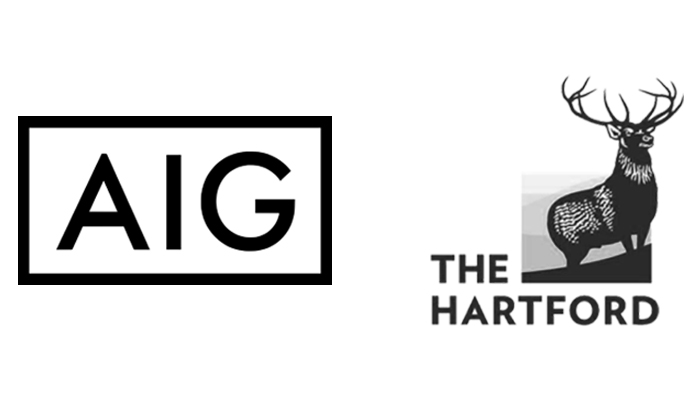
Two new retroactive reinsurance deals involving Berkshire Hathaway were announced in January.
First up, on January 3, was The Hartford Fire Insurance Company and certain of its affiliates (collectively “Hartford”), which ceded existing net asbestos and environmental (“A&E”) reserves to National Indemnity (“NICO”), a Berkshire Hathaway subsidiary. The terms of the deal are for a premium payment of $650 million for a reinsurance limit of $1.5 billion covering adverse development above Hartford’s existing reserves at December 31, 2016.
Then on January 20, we heard from American International Group (“AIG”), which had entered into a monster of a deal with NICO under which it pays a premium of $9.8 billion for a reinsurance limit of $20 billion, excess of $25 billion. This deal covers adverse development for 80% of AIG’s U.S. commercial long-tail exposures underwritten before January 1, 2016.
Beyond the bare bones press releases and Form 8-K SEC filings, I have not had an opportunity to study the transaction documents or more detailed disclosures that will likely be part of these companies’ year-end reporting. So for now, I have a few preliminary observations:
- Hartford had now done much to eliminate or contain its exposure to the volatility of its reserves for asbestos and environmental claims. In July 2016, it announced the sale of its UK run-off subsidiaries to Catalina Holdings — a Bermuda-based acquirer of books of run-off businesses. These primarily contained U.S. asbestos and environmental liabilities previously underwritten by Excess Insurance Company. This transaction is expected to close in first quarter 2017. The new transaction, a retroactive reinsurance deal with NICO, provides a significant protection from adverse development of $1.5 billion above their carried reserves of $1.7 billion at December 31, 2016. The volatility of these classes of liabilities certainly makes it possible, though unlikely, that the cover will one day exhaust. But for the foreseeable future, that volatility has been contained.
- The AIG transaction is their second retroactive reinsurance deal with NICO. The first, in April 2011, dealt with the bulk of AIG’s asbestos liabilities. AIG paid a premium of $1.67 billion for a reinsurance limit of $3.5 billion over carried reserves that at the time totaled $1.82 billion. This second deal is considerably bigger, involving a premium of nearly $10 billion and reinsurance limits of $20 billion, excess of $25 billion. This makes it the largest reinsurance deal in history, larger even than NICO’s 2007 retroactive reinsurance deal with Equitas. The deal gives reinsurance protection for long-tail commercial lines liabilities underwritten before January 1, 2016.
- The big surprise for both the Harford and AIG deals is that both insurance companies will continue to handle claims and collect reinsurance. I am aware of only one other retroactive reinsurance deal with NICO in which claims handling and reinsurance collection responsibilities were NOT transferred to Resolute, NICO’s run-off services subsidiary. That deal was later renegotiated to transfer claims handling responsibilities to Resolute. Hitherto, it has been a cornerstone of NICO’s approach to retroactive reinsurance for the provision of run-off services to be inseparable from the rest of the deal. One cannot help but wonder whether this development was driven by Resolute’s claims handling reputation, as recently highlighted in the article in The Economist. It is also very interesting to note that NICO still finds the deals attractive, even without assuming claims administration. Such is their hunger for float!
- The majority of NICO’s retroactive reinsurance deals have centered around the assumption of asbestos exposure. In addition, some include environmental and other legacy liabilities. The Liberty Mutual deal included a significant workers compensation component. And, NICO has done deals with insurers covering exposures from more recent accident years than those associated with traditional legacy liabilities such as A&E exposures, including those with Swiss Re and HDI-Gerling. Therefore, the AIG deal is not unprecedented, but it does break the mold somewhat in being focused on long-tail commercial lines up to the most recent accident years.
- The AIG deal structure is also different from the NICO norm; it more resembles a traditional prospective reinsurance arrangement. Under “traditional” or “prospective” reinsurance, the ceding insurer always retains a part of the risk and retains claims handling authority. This flows from the “follow the fortunes” and “follow the settlement” doctrines that guide the traditional reinsurance marketplace. Without the risk retention, there would be no incentive for the ceding insurer to act in the best interests of the reinsurer. The risk retention ensures that their interests are aligned. Therefore, it is not surprising to see AIG retaining 20% of the risk, and I speculate that this part of the deal structure was at the insistence of NICO. In the case of Hartford, we learn that the responsibility they retain for claims handling is “subject to certain conditions”. I suspect those “certain conditions” provide a lot of protection for NICO.
- I have many times commented that the series of retroactive reinsurance deals transacted by NICO gives them the largest concentration of legacy asbestos liability in the industry and in history. I have delved into this in detail from time to time. But a good place to get a general sense is the annual A.M. Best “Special Report on U.S. Asbestos & Environmental” reserves, which examines the special note 33 asbestos and environmental disclosures of all U.S. insurance companies in their statutory annual statements. Exhibit 7 of that report ranks the U.S. insurance groups by the size of their environmental and asbestos reserves. Berkshire Hathaway, by virtue of its own direct insurance underwriting, is already number two on the list. But when their retroactive reinsurance deals are taken into account, it can be seen they have, by far, the largest concentration, given that they retroactively reinsure the insurance groups occupying the first (AIG), fifth (Harford), ninth (CNA), twelfth (Liberty Mutual) and sixteenth (One Beacon) positions, and many others — most significantly Equitas, which does not appear on the list (it is not a U.S. insurance group). Perhaps at some point the regulators will wake up to the dangers of this unprecedented concentration of risk.


